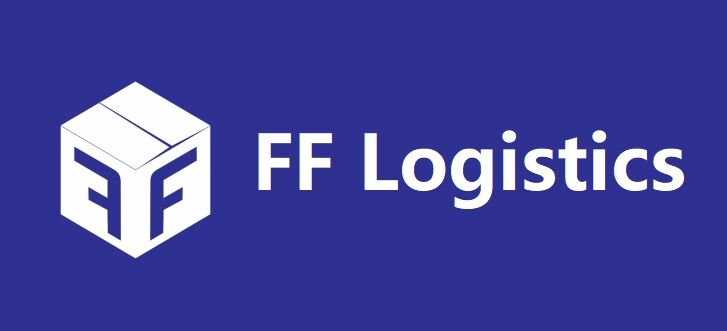Introduction
Logistically, FBM companies pose different challenges as they are tasked to personally take charge throughout the order fulfillment process. To solve these issues, a lot of FBM businesses hire third party logistics (3PL) providers. A 3PL partner will help you optimize operations; decrease costs, and increase customer satisfaction through warehouse management, picking, packing and Shipping. This post will help you learn how to locate the right 3PL partner for your FBM business.
What Your FBM Business Needs
You need to know what you are looking for How 3PLs Operate?
A. Inventory Management Needs: Determine the complexity of your inventory — number of SKUs, the rate at which they turn over, and whether you require specialized storage based on volume or physical characteristics
B. Order volume and season peaks: Analyze the trend of your order volumes and predict how that trend will fluctuate with season as well as promotional activities.
C. Shipping and Delivery: Identify what your customers regard as satisfactory shipping times, as well as the types of delivery.window.
D. Special handling or storage needs: Indicate if your products need temperature controlled, humidity controlled, etc requirements for proper care.
3PL Partners Research
Find and Research 3PL Partners that are Best Suited for Your Business
A. Experience in the Industry: Find out if a consultant works with your a type of business, because they would be familiar with the specific obstacles and conditions.
Services Offered: make sure the necessary services are available warehousing, pick-and-pack, shipping and returns management.
Assess how much technology they have from inventory management systems all the way to Integration capabilities into your own existing systems.
Reputation and Customer Feedback: Find out their reputation in the market and ask for current and previous customer references.
Criteria of the shortlist for 3PL partners
Here is how to evaluate potential 3PL partners:
A. Strong Financial and Reliability: Look for a partner that has durable footing financially, as well as a reputation of making good on promises.
B. Geographic Reach and Fulfillment Proximity to Customers: Choose 3PLs with warehouses in geographies that will reduce shipping time and expenses.
C. Scalability to Align with Business Growth: Make sure the 3PL is able to scale up their services as your business expands.
D. Regulatory Compliance: Ensure that the 3PL is in compliance with all applicable import/export constraints and tax laws.
Evaluating 3PL Partners
Approach Evaluate the shortlisted 3PL partners systematically:
A. Request for Information (RFI) – gather basic information on services, ability, and cost.
B. Request for Proposal (RFP) — Ask the provider to submit detailed proposals provoking their approach and the solutions they have in your needs The most usual objections of proposal writers are the following:
C. Touring Site Visits: This is the tour of their operations, technology and infrastructure.
D. Assessing Customer Service and Support: You will also want to evaluate their customer service and support as this will represent your business.
Analysis of Costs & Pricing Models
Assess the expense of various 3PL partners
A. Pricing Structures: Understand the types of pricing structures – Fixed, Variable or Tiered price based models
B. Hidden Costs, Extra Fees: Look out for hidden costs and extra fees (fuel surcharges – customs duties).
C. Cost-Benefit Analysis of 3PL services- Perform a cost-benefit analysis in order to quantify the collective worth provided by these 3PL services.
Negotiating the Partnership
They enter into discussions with one of the 3PLs selected and discuss terms:
A.Special > Service Level Agreements (SLAs) – Clearly define the SLAs, performance metrics and expectations.
B. Measurement Plans and KPIs: Define performance metrics and key performance indicators (KPI)s to measure success of the 3PL
C. Contract Terms & Conditions Negotiation: Negotiate contract terms i.e., Price, service level, termination clauses etc
D. Future Proof Your Existence: Make sure your future business needs are covered by the agreement
Onboarding and Integration
Incorporate your selected 3PL partner into business operations:
A. Transition Planning and Timelines: Create and document a transition plan with specific timelines for the transfer of duties.
B. Data and System Integration: Your 3PL Integrates its systems with yours to ensure flawless data exchange, inventory management etc.
C. Staff Training & Knowledge Transfer 1.Undertake some training of your staff on the new processes and ensure a smooth knowledge transfer.
Monitoring and Control of Partnership Frankly, there is no better ROI Metrics which enforces the partnership in business like tracking and monitoring the partnership.
Keep a close, watchful eye and administer your relationship with the 3PL:
A. Performance reviews: Regularly review the 3PL performance with KPI's and SLAs agreed to during purchase.
B. Communication Protocols — Define the working process for creating turn-around-time on every issue that needs attention.
C.Feedback Loops and Continuous Improvement: Provide feedback loops for continuous improvement on both the partnership and service quality side.
Conclusion
In conclusion, you need the excellent 3PL for your FBM business to which will lead your business to heights of success. Finding a 3PL provider that complies with your operational goals in ways that are important to you, comes down to understanding your business needs, researching and assessing suitable partners. Keep in mind, a good partnership with your 3PL is the recipe for long term success and growth so spend time to create and build that relationship behind it.



